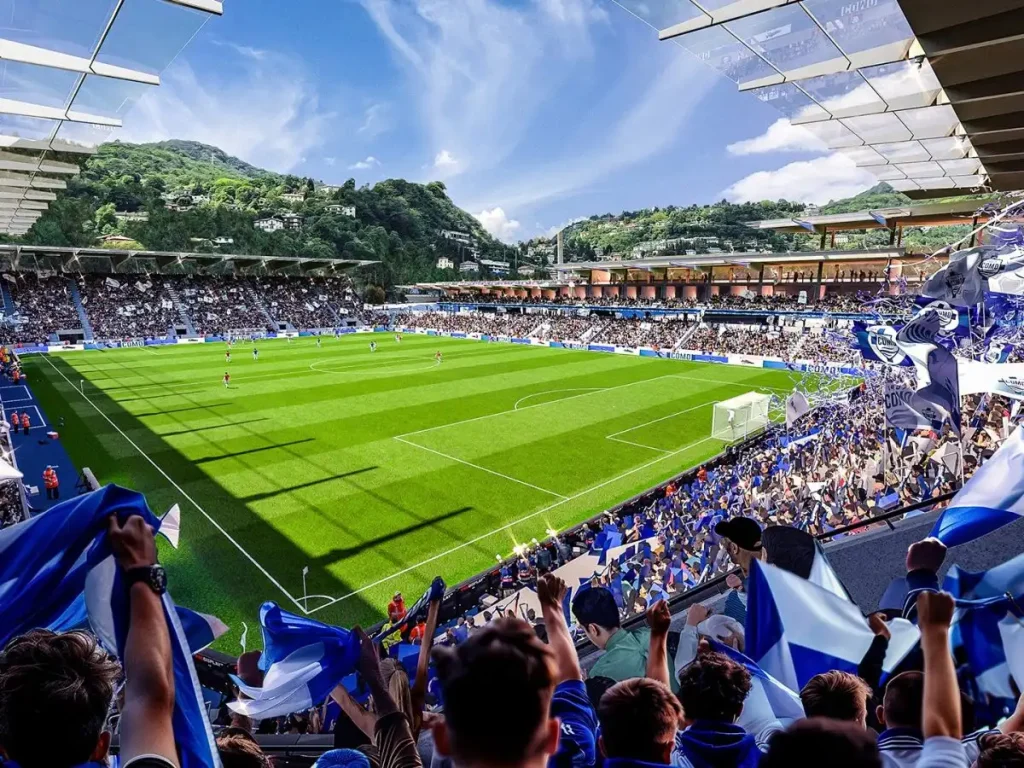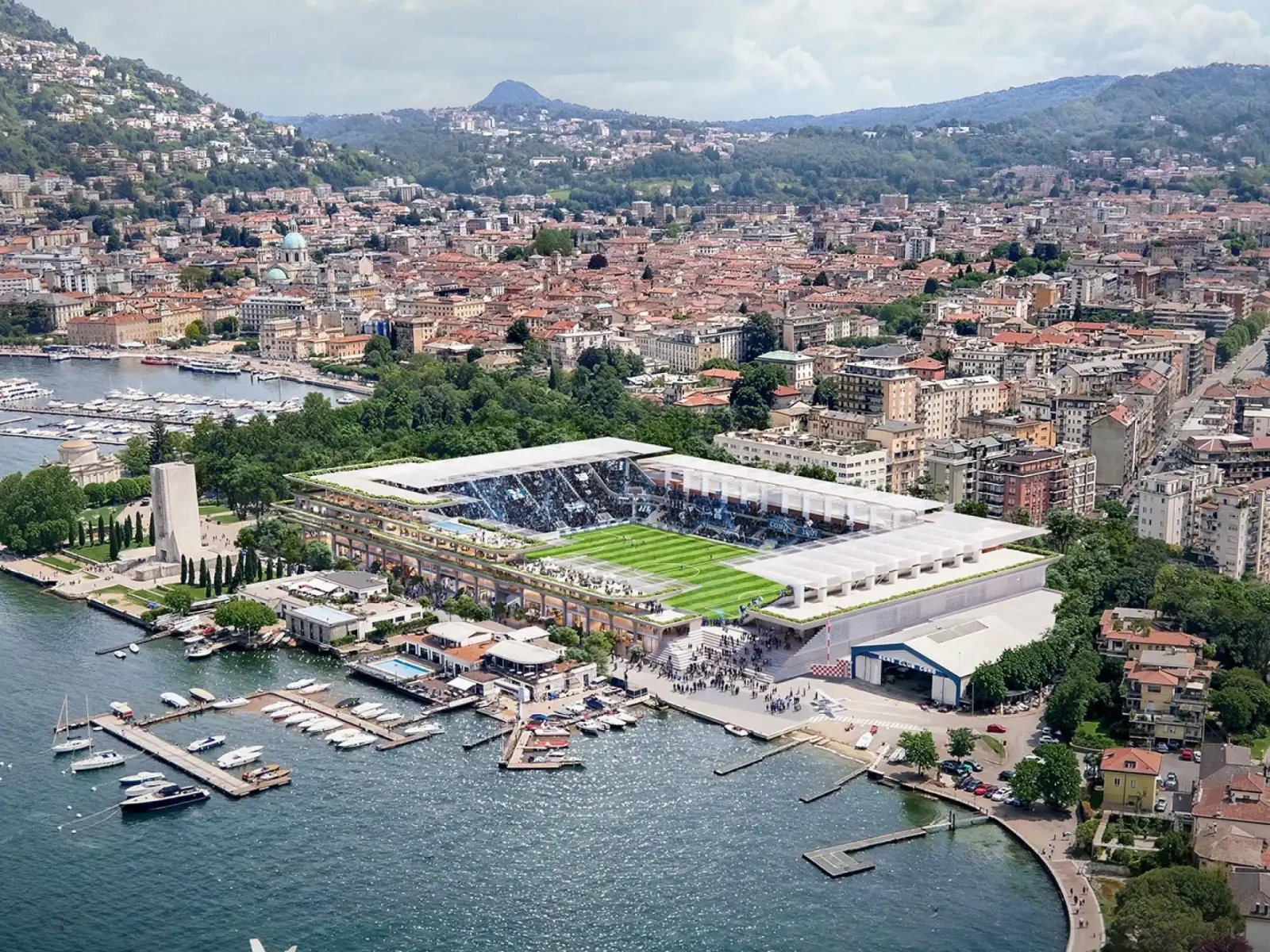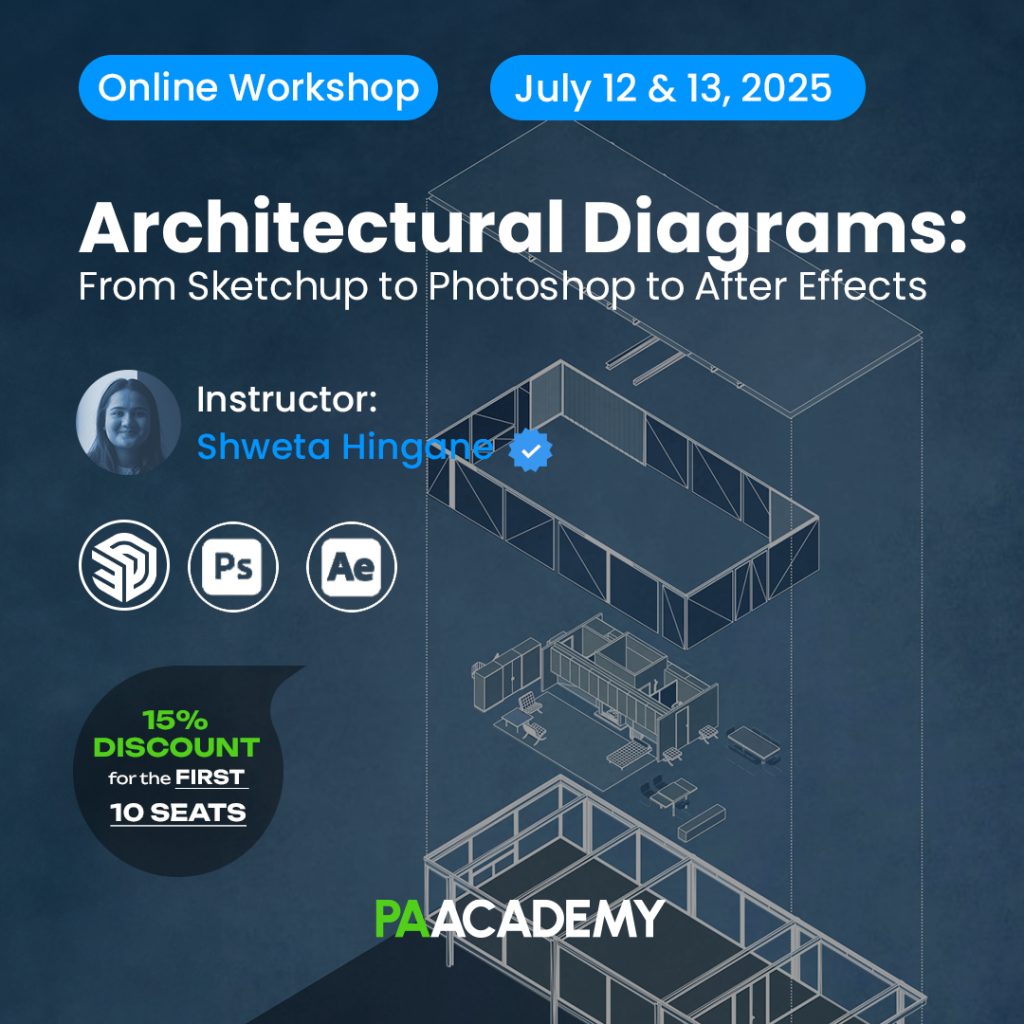Nestled on the shore of the beautiful Lake Como in Northern Italy, the Giuseppe Sinigaglia Stadium encapsulates Como 1907’s deep roots within its city.
Now, in collaboration with the Municipality of Como, the Club has announced initial plans and unveiled concept images for the Populous-designed redevelopment of their iconic stadium.

While all of the current renderings are concept images, and therefore not necessarily representative of the final designs, the club expects to show completed designs following the completion of the first phase – the submission and approval of the Document of Feasibility of Project Alternatives (DOCFAP).

Giuseppe Sinigaglia Stadium Redevelopment Timeline
Design (Feasibility) and Approval Process – May 2026
Construction Phase I – October 2027
Construction Phase II – August 2028
In the meantime, Como 1907 and the Municipality are committed to an open and transparent process, engaging with fans and local residents throughout the development.

“We are privileged to be involved in the redesign of the Stadio Giuseppe Sinigaglia. We look forward to working with Como 1907 and the Municipality of Como to bring the vision to life for the redevelopment of the stadium and how it will integrate with the local community.” – Silvia Prandelli, Senior Principal & GM of Populous Italia
Como 1907 President, Mirwan Suwarso also commented:
“Our aim is to ensure Stadio Giuseppe Sinigaglia remains a vital part of the community. The new project must honor the Giuseppe Sinigaglia stadium legacy while making it an active and accessible space for all citizens and visitors—not just for football, but for everyone to enjoy, 365 days a year.”
Populous exemplifies their commitment to creating spaces that are both innovative and deeply rooted in local culture, as also seen in the new Kop Stand at Wrexham AFC’s STōK Cae Ras stadium.
The renders and project description are provided by Populous.
Learn with PAACADEMY: Check out the workshops at PAACADEMY to learn from the industry’s best experts how to use advanced parametric design tools, AI in design workflows, and computational design in architecture.






















Leave a comment